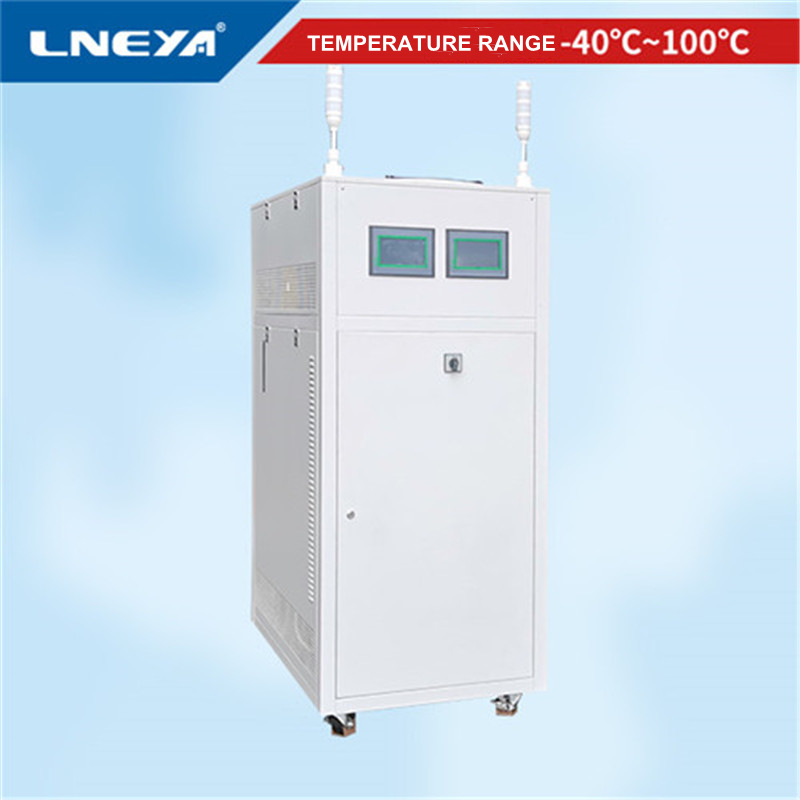ISG/TM Motor Test Cooling System High Voltage Failure and Treatment Measures
The ISG/TM motor test cooling system is divided into two types in the industry: air-cooled and water-cooled. The working principle is to first inject a certain amount of water into the water tank in the machine, and then pass the ISG/TM motor test cooling system to cool the water. Then the low-temperature cooling water is sent to the equipment to be cooled by a water pump. The chilled water takes away the heat and then increases in temperature and returns to the water tank to achieve cooling.

ISG/TM Motor Test Cooling System High Voltage Failure and Treatment Measures
(1). The cooling water temperature is too high and the condensation effect is poor. ISG/TM motor test cooling system has high water temperature and poor heat dissipation, which will inevitably lead to high condensing pressure. This phenomenon often occurs in high-temperature seasons. The reason for the high water temperature may be: cooling tower failure, such as the fan is not turned on or even reversed, the water distributor does not turn, it is manifested as the cooling water temperature is very high and rising rapidly; the outside temperature is high, the water path is short, and the amount of water that can be circulated In this case, the cooling water temperature is generally maintained at a relatively high level, which can be solved by increasing the storage tank.
(2) The cooling water flow rate is insufficient, and the rated water flow rate is not reached. The main performance is that the pressure difference between the inlet and outlet water of the unit becomes smaller (compared with the pressure difference at the beginning of the system’s operation), and the temperature difference becomes larger. The reason for the insufficient water flow is the lack of water in the system or the presence of air. The solution is to install an exhaust valve at the height of the pipeline to exhaust; the pipeline filter is blocked or the selection is too fine, and the water permeability is limited. You should choose a suitable filter and Clean the filter regularly; the water pump is small and does not match the system.
(3), the condenser is fouled or blocked. Condensate water generally uses tap water, which is easy to scale, and because the cooling tower is open, it is directly exposed to the air. Dust and foreign matter can easily enter the cooling water system, causing the condenser to be dirty and blocked, the heat exchange area is small, and the efficiency is low. Affect water flow. The performance is that the pressure difference and temperature difference between the inlet and outlet water of the unit become larger, and the upper and lower temperatures of the condenser are very high when the condenser is touched by hand. The unit should be backwashed regularly, and chemical cleaning and descaling should be carried out if necessary.
(4), the refrigerant is overcharged. This situation generally occurs after maintenance, and it is manifested as high suction and exhaust pressure and balance pressure, and high compressor operating current. It should be vented according to the suction and discharge pressure, balance pressure and operating current under rated conditions until normal.
(5), the refrigerant is mixed with non-condensable gases such as air and nitrogen. This situation generally occurs after maintenance, and the vacuum is not at the bottom. It can only be drained, re-evacuated, and recharged with refrigerant.
(6) False alarms caused by electrical faults. Because the high-voltage protection relay is damp, poorly contacted or damaged, the unit electronic board is damp or damaged, and the communication failure causes a false alarm. This kind of false fault, often the HP fault indicator on the electronic board is not bright or slightly bright, the high-voltage protection relay manual reset is invalid, the computer displays “HPRESET”, or disappears automatically, the running current of the compressor is normal, and the suction and discharge pressures are also normal.
 Industrial Chillers Manufacturer Supplier - LNEYA
Industrial Chillers Manufacturer Supplier - LNEYA











